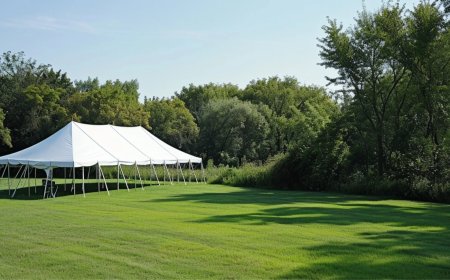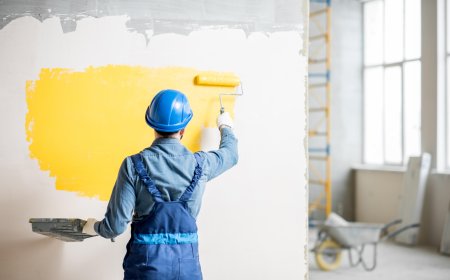What Is a Chimney Liner and Why Does Your Lakeland Home Need One
Protect your home with a durable chimney liner that improves safety, boosts efficiency, and prevents harmful gas leaks.

If you're a homeowner in Lakeland, you probably think about keeping your house safe, warm, and cozy. But sometimes, the little detailslike your chimneydon't get the attention they deserve. One of those often-overlooked but super important parts is the chimney liner. You might have heard about it in passing, or maybe you're wondering if it's something you really need. Well, today, lets dive into what a chimney liner really is, why its crucial for your home, and how it can make a big difference in keeping you and your family safe.
What Exactly Is a Chimney Liner? Think of It as Your Chimneys Protective Jacket
Imagine your chimney as a big, open pipe that channels smoke and gases from your fireplace or stove outside. Now, think of a chimney liner as a protective sleeve or jacket that lines the inside of that pipe. Its main job is to create a safe, smooth pathway for all the smoke, fumes, and heat to exit your home without causing damage or danger.
Without a liner, your chimneys inner wallsoften made of brick or stonecan wear down over time, crack, or become damaged. This can lead to dangerous situations like smoke leaks or even chimney fires. The liner acts as a barrier, shielding the walls from the intense heat and corrosive byproducts of burning fuel.
There are different materials used for liners, including stainless steel, clay tiles, or aluminum. Each has its own perks, but the common goal is the same: to keep everything inside your chimney safe and functioning smoothly.
Why Your Lakeland Home Needs a Chimney Liner: Safety First!
Living in Lakeland, youre probably familiar with the warm, inviting glow of a fireplace. Its a great way to relax, gather with friends, or just enjoy a cozy evening. But, that warm glow comes with some hidden risks if your chimney isnt properly lined.
The dangers of an unlined or damaged chimney are serious. Cracks or deterioration can allow dangerous gases like carbon monoxide to seep into your home, which is a silent but deadly threat. Plus, creosote buildupthose sticky, flammable depositscan ignite and cause chimney fires. This isnt something you want to deal with, especially since fires can spread quickly and cause extensive damage.
A chimney liner keeps these hazards at bay by:
- Containing harmful gasesand preventing leaks into your living space.
- Reducing the risk of firescaused by creosote buildup or cracks.
- Protecting the structural integrityof your chimney, so it lasts longer.
- Improving overall efficiencyof your heating appliances, saving you money on fuel.
Think of it like a safety harness for your chimneywithout it, you're taking unnecessary risks that could have costly consequences.
Key Features
-
Material Durability
- Made from materials like stainless steel, clay tile, or aluminum that withstand high temperatures and corrosive byproducts.
-
Heat Resistance
- Designed to tolerate the intense heat generated by fireplaces, wood stoves, or boilers.
-
Corrosion Resistance
- Resistant to corrosion from moisture, creosote, and other byproducts of combustion.
-
Safety Enhancement
- Prevents dangerous gases like carbon monoxide from leaking into the home.
-
Improved Draft and Ventilation
- Enhances the chimneys airflow, promoting efficient combustion and reducing creosote buildup.
The Cost of a Chimney Liner: Is It Worth the Investment?
When it comes to home upgrades, cost is always a big factor. You might be wondering, How much does installing a chimney liner cost, and is it worth it? The short answer is: yes, absolutely.
| Chimney Liner Type | Material | Typical Cost Range | Best For | Lifespan |
|---|---|---|---|---|
| Stainless Steel (Rigid) | Stainless Steel | $900 $3,500 | Masonry chimneys, wood/gas/oil appliances | 1520+ years |
| Stainless Steel (Flexible) | Stainless Steel | $800 $2,500 | Older chimneys with bends or offsets | 1520+ years |
| Aluminum | Aluminum | $500 $1,500 | Gas appliances only | 1015 years |
| Clay Tile | Fired Clay | $2,000 $7,000 | Traditional masonry chimneys | 50+ years (if intact) |
| Cast-in-Place Liner | Cement-like mixture | $2,000 $5,000 | Damaged chimneys needing structural support | 3050 years |
When to Call in the Pros: Emergency Service and Maintenance
Chimneys arent exactly something you want to mess with on your own. If you notice any signs of troublelike smoke backing up into your house, an unpleasant smell, or visible cracks in your chimneyit's time to call in a professional.
Emergency situationscan include chimney fires, sudden leaks, or dangerous buildup of creosote. Having a trusted local expert in Lakeland who can quickly assess and fix any issues is a smart move. Regular inspections and maintenance are also key to catching small problems before they become big headaches.
Many chimney service companies offer emergency visits, especially during the colder months when your fireplace is in heavy use. They can evaluate whether your chimney needs a new liner or if existing ones need repairs. Remember, a quick response can prevent disasters and extend the life of your chimney.
Key Features of a Good Chimney Liner
| Feature | Why It Matters |
|---|---|
| Durability | Can withstand high heat and corrosive gases |
| Proper Fit | Ensures no leaks and optimal performance |
| Easy Maintenance | Makes cleaning and inspection simpler |
| Cost-Effective Options | Balances quality with affordability |
A good liner isnt just about safetyit's also about making your fireplace or stove run smoothly and saving you money in the long run.
Q1: What is a chimney liner?
A: A chimney liner is a protective tube installed inside a chimney to contain the combustion gases, improve safety, and enhance the efficiency of your heating appliance.
Q2: Why do I need a chimney liner?
A: A chimney liner prevents heat transfer, protects the chimney walls from corrosion and damage caused by smoke and soot, improves draft, and reduces the risk of fire and harmful gases leaking into your home.
Q3: How do I choose the right chimney liner?
A: Factors include the type of fuel used, the size and configuration of your chimney, local building codes, and your budget. Consulting a professional ensures proper selection.
Q4: How long does a chimney liner last?
A: Typically, stainless steel liners last 10-20 years, while clay liners can last 50 years or more if properly maintained.
Q5: Can I install a chimney liner myself?
A: Installing a chimney liner is complex and potentially dangerous. It's recommended to hire a certified professional to ensure safety and code compliance.
Conclusion
So, whats the deal with chimney liners? Simply put, theyre an essential part of maintaining a safe and functional chimney system. They protect your home from smoke leaks, fires, and harmful gases, all while helping your heating system work better. While theres an upfront cost, its a worthwhile investment that pays off in peace of mind and safety.
If you havent had your chimney inspected recently or suspect it might need a liner upgrade, dont wait. Reach out to a trusted Lakeland chimney professionaltheyre your best bet for keeping everything running smoothly.
Remember, your homes safety starts with the little things. A chimney liner might just be the most important upgrade you make this year!
Read more:


























